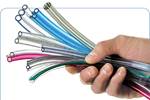Profile Processor Pexco Expands in Fluoropolymers
Purchases Enflo, well-known for providing customers with PTFE products in a range of markets.
Leading North American custom profile extruder has acquired Enflo LLC in a move that bolsters Pexco’s strategic fluoropolymer expansion initiatives.
“We are pleased to welcome to the Pexco family of companies,” said Sam Patel, Pexco CEO. “Enflo, a trusted brand since 1954, is well known for providing customers with PTFE products that meet or exceed customer requirements across critical applications in aerospace, defense, medical, chemicals processing, construction, electrical and electronics 大象传媒es. We look forward to adding the collective talents of the Enflo team to the Pexco family.”
Mark Lamoureaux, CEO of Enflo, added, “We are excited to join the Pexco family of companies, whose scale, reputation, and engineering expertise will allow us to provide an even broader array of services and solutions to our customers. This relationship will also help us expand the geographic and industry reach of the PTFE solutions we provide.”
With its acquisition of Enflo LLC, Atlanta-based Pexco will expand its offerings, products and services, expanding its mission to provide customers with one of the most comprehensive offerings of high-performance polymer capabilities for the most demanding applications.
Related Content
-
Updated Software Reduces Die Design Iterations
New software said to reduce the number of fine-tuning iterations and die development time by at least 50%.
-
Crosshead Die for Elastomers Adjusts Easily
NPE2024: Mechanically actuated gum space adjustment requires only ordinary socket wrench.
-
This Tubing Processor Is Used to the 'Hard Stuff'
Kent Elastomer Products has emerged from its beginnings as a supplier of latex dip tubing to a leading manufacturer of high-end tight tolerance tubes for a range of applications.


